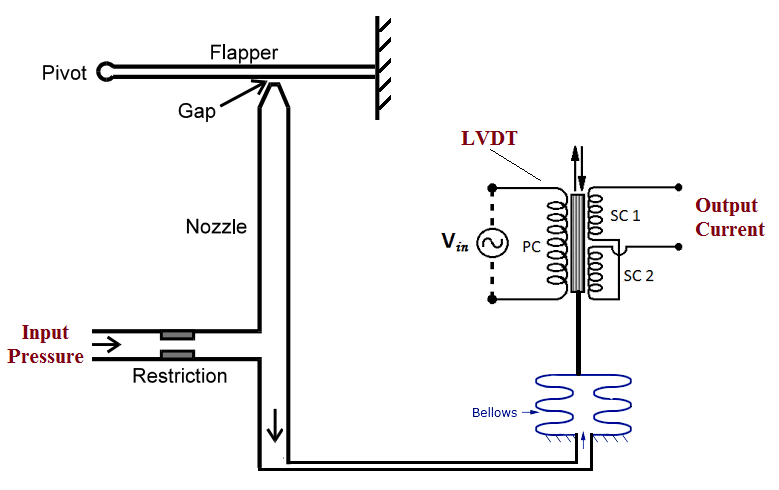We can construct a pressure to current converter using a Flapper- Nozzle arrangement , Bellows and a Linear Variable Differential Transformer (LVDT) circuit.
Input pressure is given to Flapper-Nozzle arrangement and the output current will come through the LVDT.
Also Read : What is Flapper/Nozzle ?
Flapper Nozzle arrangement: It is type of pressure controlling device. It controls the input pressure by the moving the Flapper away or towards the nozzle, if we need high pressure, then nozzle will be closed by the Flapper and if we need less pressure, then nozzle will be opened by moving flapper away.
Bellows:- Bellows are one type of pressure measuring devices. They are the elements which will expand as per the applied pressure. Based on the displacement we can measure the pressure.
Linear Variable Differential Transformer (LVDT): It works on the principle of Mutual Inductance. In the LVDT three coils will be present. Primary coil is connected to a power source and secondary coils are connected in series opposition method.
At initial position, the voltage induced will be zero. If the core displaces, then due to inductance, voltage will be induced into the coils, resulting in the current.
Pressure to Current Converter

First Input pressure is supplied to the Flapper- Nozzle arrangement. Then it will supplied through a pipe and that pressure is given as input to the bellows. These bellows are connected to the Core of LVDT.
When pressure is applied to bellows, they will expand thus core displaces and the voltage is induced on the secondary coils of LVDT.
As voltage is induced, current will flow through the coil. That current is proportional to the input pressure applied. Thus Pressure is converted into equivalent current.
When compared with standard values we can covert 3-15 P.S.I of pressure can be converted to 4-20 mA of current
nice illustration through clear picture…
This explanation shows your experience…
What happens if there is no flapper and pivot…
Many thanks
It’s a helpful site